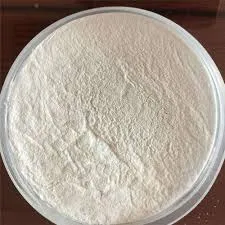
Sep . 04, 2024 06:53 Back to list
hydroxyethyl cellulose solubility in ethanol
Hydroxyethyl Cellulose Solubility in Ethanol An In-Depth Exploration
Hydroxyethyl cellulose (HEC) is a water-soluble polymer derived from cellulose, a natural polymer that constitutes the primary structural component of plant cell walls. Due to its unique properties, HEC is commonly utilized in various industrial applications, including pharmaceuticals, cosmetics, and food production. Understanding the solubility of HEC in ethanol is crucial for industries aiming to utilize this versatile substance in specific formulations.
HEC is generally known for its exceptional solubility in water, where it forms clear, viscous solutions at relatively low concentrations. However, its solubility profile in organic solvents, such as ethanol, is less straightforward. Ethanol, a polar protic solvent, can influence the behavior of HEC significantly due to its ability to form hydrogen bonds. The solubility of HEC in ethanol largely depends on several factors, including temperature, the concentration of HEC, and the presence of other ingredients in the solution.
At lower concentrations, HEC demonstrates limited solubility in ethanol. The intermolecular interactions between HEC molecules and the ethanol molecules can lead to reduced solvation, causing precipitation or gel formation rather than a clear solution. As the temperature increases, solubility tends to improve due to enhanced molecular mobility, allowing better interaction between HEC and ethanol. Consequently, heating the solvent can be a viable strategy for attaining the desired HEC concentration in ethanol solutions.
hydroxyethyl cellulose solubility in ethanol

The specific degree of substitution (DS) in HEC can also impact its solubility in ethanol. HEC with a higher DS typically exhibits enhanced solubility because the ether groups within the polymer structure increase its hydrophilicity, thereby aiding precipitation control in mixtures. Conversely, HEC with a lower DS may be less soluble in ethanol and could require the addition of co-solvents or surfactants to promote miscibility.
When formulating products that involve HEC and ethanol, it is essential to consider not only solubility but also the viscosity and texture associated with the final product. HEC can significantly modify the rheological properties of formulations; therefore, achieving optimal solubility ensures that the desired viscosity is attained without compromising the product's stability.
In industrial applications, understanding the solubility of HEC in ethanol opens new avenues for product development. For instance, in the pharmaceutical industry, HEC can be used as a thickening agent in gel formulations or a stabilizer in emulsions. In the cosmetic sector, it can enhance the texture and performance of lotions and creams when combined with ethanol-based systems.
In conclusion, the solubility of hydroxyethyl cellulose in ethanol is a multifaceted subject influenced by numerous variables. By tailoring the preparation methods and understanding the interactions at play, industries can harness the full potential of HEC in various ethanol-based applications, paving the way for innovative and effective product formulations.
-
Versatile Hpmc Uses in Different Industries
NewsJun.19,2025
-
Redispersible Powder's Role in Enhancing Durability of Construction Products
NewsJun.19,2025
-
Hydroxyethyl Cellulose Applications Driving Green Industrial Processes
NewsJun.19,2025
-
Exploring Different Redispersible Polymer Powder
NewsJun.19,2025
-
Choosing the Right Mortar Bonding Agent
NewsJun.19,2025
-
Applications and Significance of China Hpmc in Modern Industries
NewsJun.19,2025







